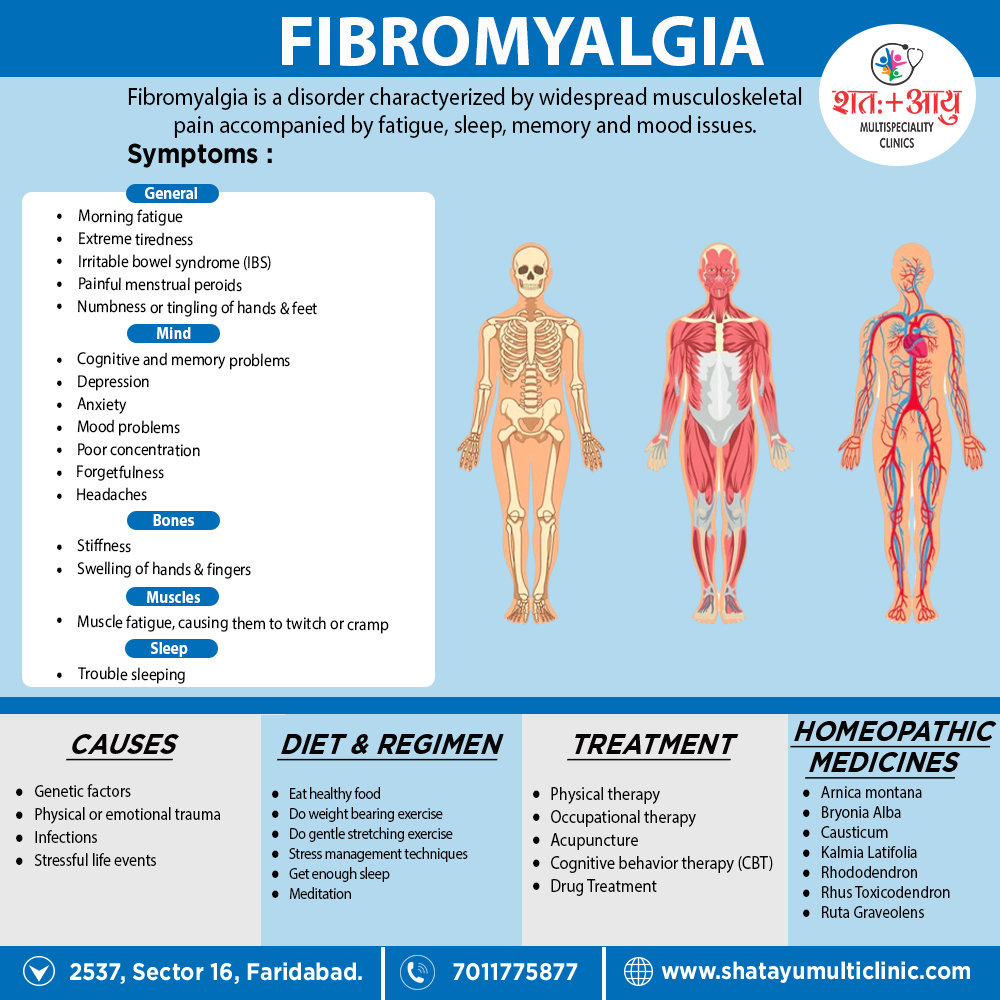In general, treatments for fibromyalgia include both medication and self-care.
The emphasis is on minimizing symptoms also improving general health.
No one treatment works for all symptoms.
Medications:
Medications can help reduce the pain of fibromyalgia also improve sleep.
Common choices include:
Pain relievers:
- Over-the-counter pain relievers such as acetaminophen (e.g. Tylenol, others), ibuprofen (e.g. Advil, Motrin IB, others) or naproxen sodium (e.g. Aleve, others) may be helpful.
- Your doctor might suggest a prescription pain reliever such as tramadol (i.e. Ultram).
- Narcotics are not advised, because they can lead to dependence and may even worsen the pain over time.
Antidepressants:
- Duloxetine (Cymbalta) and milnacipran (Savella) may help ease the pain and fatigue associated with fibromyalgia.
- Your doctor may prescribe either amitriptyline or the muscle relaxant cyclobenzaprine to help promote sleep.
Anti-seizure drugs:
- Medications designed to treat epilepsy are often useful in reducing certain types of pain.
- Gabapentin (Neurontin) is sometimes helpful in reducing fibromyalgia symptoms, while pregabalin (Lyrica) was the first drug approved by the Food and Drug Administration to treat fibromyalgia.
Therapy:
Basically, A variety of different therapies can help reduce the effect that fibromyalgia has on your body and your life.
Examples include:
Physical therapy:
- A physical therapist can teach you exercises that will improve your strength, flexibility also stamina.
- Water-based exercises might be particularly helpful.
Occupational therapy:
- In general, An occupational therapist can help you make adjustments to your work area or the way you perform certain tasks that will cause less stress on your body.
Counseling:
- Talking with a counselor can help strengthen your belief in your abilities also teach you strategies for dealing with stressful situations. [2]
Exercise:
- A combination of aerobic exercise and resistance training, or strength training, has been linked to a reduction in pain, tenderness, stiffness, also sleep disturbance, in some patients.
- If exercise is helping with symptoms, it is important to maintain consistency in order to see progress.
- Working out with a either partner or personal trainer may help to keep the exercise program active.
Acupuncture:
- Generally, Some patients have experienced improvements in their quality of life after starting acupuncture therapy for fibromyalgia.
- The number of sessions required will depend on the symptoms also their severity.
- Besides this, One study found that 1 in 5 people with fibromyalgia use acupuncture within 2 years of diagnosis.
- All in all, The researchers concluded that it may improve pain also stiffness.
Behavior modification therapy:
- Behavior modification therapy is a form of cognitive behavioral therapy (in other words; CBT) that aims to reduce negative, either stress or pain increasing behaviors and improve positive, mindful behaviors.
- It includes learning new coping skills also relaxation exercises. [3]

